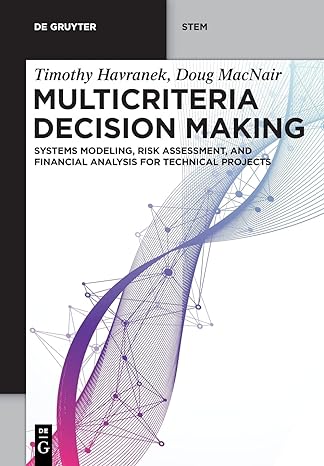Question
Campbell Manufacturing Company uses two departments to make its products. Department I is a cutting department that is machine intensive and uses very few employees.
Campbell Manufacturing Company uses two departments to make its products. Department I is a cutting department that is machine intensive and uses very few employees. Machines cut and form parts and then place the finished parts on a conveyor belt that carries them to Department II, where they are assembled into finished goods. The assembly department is labor intensive and requires many workers to assemble parts into finished goods. The companys manufacturing facility incurs two significant overhead costs: employee fringe benefits and utility costs. The annual costs of fringe benefits are $264,000 and utility costs are $192,000. The typical consumption patterns for the two departments are as follows:
| Department I | Department II | Total | |
| Machine hours used | 15,700 | 4,300 | 20,000 |
| Direct labor hours used | 5,300 | 10,700 | 16,000 |
The supervisor of each department receives a bonus based on how well the department controls costs. The companys current policy requires using a single allocation base (machine hours or labor hours) to allocate the total overhead cost of $456,000. Required
-
Assume that you are the supervisor of Department I. Choose the allocation base that would minimize your departments share of the total overhead cost. Calculate the amount of overhead that would be allocated to both departments using the base that you selected.
-
Assume that you are the supervisor of Department II. Choose the allocation base that would minimize your departments share of the total overhead cost. Calculate the amount of overhead that would be allocated to both departments using the base that you selected.
-
Assume that you are the plant manager and have the authority to change the companys overhead allocation policy. Formulate an overhead allocation policy that would be fair to the supervisors of both Department I and Department II. Compute the overhead allocations for each department using your policy.
-
Department Allocated Cost I II Total -
Department Allocated Cost I II Total -
Costs Department I Department II Fringe benefits Utility Total -
Costs Department I Department II Fringe benefits Utility Total
Step by Step Solution
There are 3 Steps involved in it
Step: 1

Get Instant Access to Expert-Tailored Solutions
See step-by-step solutions with expert insights and AI powered tools for academic success
Step: 2

Step: 3

Ace Your Homework with AI
Get the answers you need in no time with our AI-driven, step-by-step assistance
Get Started


